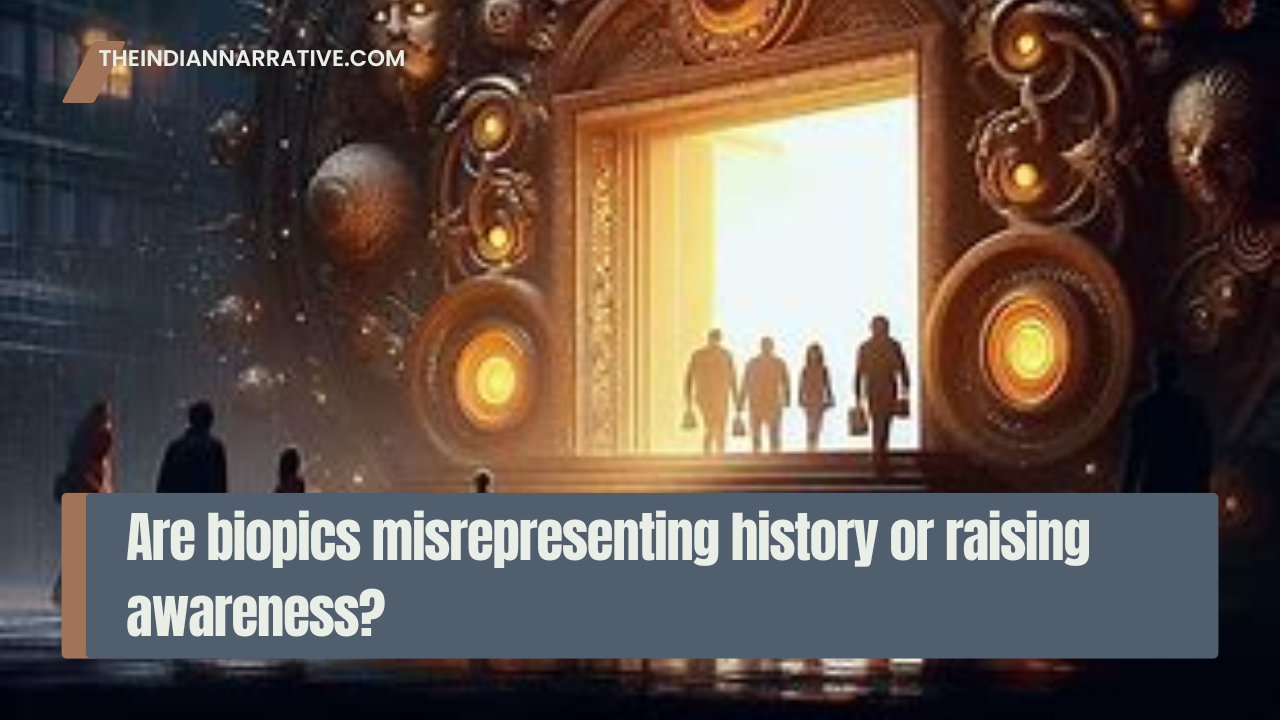Biopics—films that portray the lives of real people—have gained immense popularity, often bringing historical figures and events to mainstream audiences. While these films can inspire and educate, they also come with a darker reality: the potential for misrepresentation. This blog delves into how biopics can distort history, shape public perception, and raise ethical concerns regarding the portrayal of real-life individuals.
The Allure of Biopics
1. Bringing History to Life
Biopics offer a unique opportunity to bring historical figures and events to life, making them accessible to audiences who may not engage with traditional historical texts. These films can illuminate the struggles, achievements, and complexities of individuals, fostering a connection between viewers and history.
2. Emotional Engagement
By focusing on personal stories, biopics often evoke strong emotional responses. The humanization of historical figures can create empathy and inspire audiences, making the narratives memorable and impactful. This emotional engagement can lead to a greater interest in the underlying historical issues.
The Risks of Historical Misrepresentation
1. Selective Storytelling
One of the most significant issues with biopics is selective storytelling. Filmmakers often prioritize dramatic narratives over factual accuracy, choosing specific events or aspects of a person’s life that fit a particular storyline. This can lead to a skewed representation of reality, omitting crucial details that provide a fuller understanding of the individual or historical context.
For example, films like The Imitation Game, which tells the story of Alan Turing, received criticism for oversimplifying complex aspects of his life, including his sexuality and the societal challenges he faced. Such omissions can create a distorted view of historical figures.
2. Heroification and Villainization
Biopics often engage in the practice of “heroification,” where individuals are portrayed in an overly positive light, turning them into idealized figures. Conversely, some films may villainize characters without sufficient nuance, leading to one-dimensional portrayals. This oversimplification can shape public perception in ways that do not accurately reflect the complexities of real-life individuals.
For instance, biopics about controversial figures may present a sanitized version of their actions, glossing over ethical dilemmas or negative consequences. This can result in audiences developing skewed views of historical figures based on incomplete narratives.
The Influence on Public Perception
1. Shaping Cultural Narratives
Biopics can significantly influence cultural narratives, reinforcing stereotypes or shaping collective memory. The portrayal of certain figures can either challenge or perpetuate existing societal norms. For instance, films that highlight the struggles of marginalized groups can empower audiences and promote social change, while others may reinforce harmful stereotypes.
2. Impact on Education and Awareness
The popularity of biopics can lead to misconceptions about history, particularly among younger audiences who may rely on films as primary sources of information. When biopics become the main point of reference for historical events, they can overshadow more accurate educational resources, leading to a misinformed public.
3. Social Media Amplification
In the age of social media, the reach of biopics extends far beyond the cinema. Memes, quotes, and clips can circulate widely, further entrenching the simplified narratives presented in films. This amplification can solidify misconceptions, as audiences often consume and share content without critical evaluation.
Ethical Considerations in Biopic Production
1. Responsibilities of Filmmakers
Filmmakers have a responsibility to balance artistic license with factual accuracy. Ethical considerations should guide their storytelling choices, ensuring that they respect the lives and legacies of the individuals they depict. Engaging with historians or experts during the production process can help maintain a commitment to accuracy.
2. Informed Audiences
Viewers must approach biopics with a critical eye, recognizing the potential for distortion. Engaging with supplementary materials—such as biographies, documentaries, and historical texts—can provide a more comprehensive understanding of the subjects portrayed in these films.
3. Diverse Perspectives
Incorporating diverse perspectives in biopics can enrich narratives and provide a more balanced portrayal of historical figures. This includes representing voices that have been marginalized or overlooked in traditional accounts, which can lead to a more nuanced understanding of history.
Conclusion
While biopics have the potential to educate and inspire, they also pose significant risks in terms of historical misrepresentation and shaping public perception. The allure of storytelling can sometimes overshadow the complexities of real-life individuals, leading to oversimplified or distorted narratives.
To navigate this landscape, both filmmakers and audiences must prioritize ethical considerations and critical engagement. By fostering a culture of awareness and responsibility, we can ensure that biopics serve not only as entertainment but also as meaningful contributions to our understanding of history. Ultimately, recognizing the dark realities behind these films is essential to appreciating the true complexity of the human experience they seek to portray.





Be First to Comment